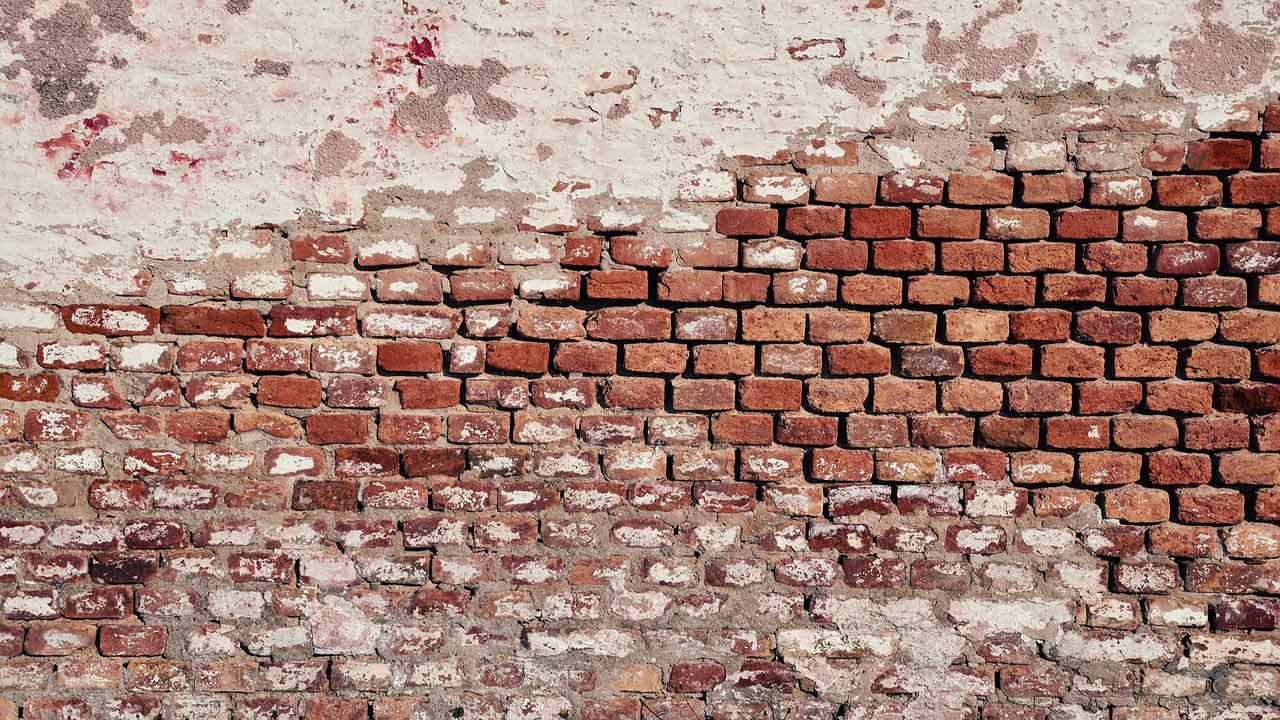Properties of Bricks.
The essential properties of bricks may be conveniently discussed under the following four headings: physical, mechanical, thermal and durability properties.
(1) Physical Properties of Bricks.
These properties of bricks include shape, size, color, and density of a brick.
(i) Shape.
The standard shape of an ideal brick is truly rectangular. It has Well defined and sharp edges. The surface of the bricks is regular and even.
Special purpose bricks may, however, be either cut or manufactured in various other shapes. These are generally modifications of rectangular shapes.
(ii) Size.
The size of brick used in construction varies from country to country and from place to place in the same country.
In India, the recommended standard size of an ideal brick is 19 x 9 x 9 cm which with mortar joint gives net dimensions of 20 x 10 x 10 cm.
These dimensions have been found very convenient in handling and making quantity estimates. Five hundred such bricks will be required for completing 1 m3 brick masonry.
It may be interesting to note that in U.K, U.S, the commonly used bricks have following dimensions:
The Standard size of Brick in India, US, UK.
| Country | Length (cm) | Thickness (cm) | Height (cm) |
|---|---|---|---|
| Standard Size of Brick in UK. | 20 | 9.5 | 5.5 |
| Standard Size of Brick in US. | 20 | 10 | 10 |
| Standard Size of Brick in India. | 19 | 9 | 9 |
(iii) Color.
The most common color of building bricks falls under the class RED. It may vary from deep red to light red to buff and purple.
Very dark shades of red indicate over burnt bricks whereas yellow color is often indicative of under-burning.
(iv) Density.
The density of bricks or weight per unit volume depends mostly on the type of clay used and the method of brick molding (soft-mud, Stiff-mud, hard-pressed etc.).
In the case of standard bricks, density varies from 1600 kg/cubic meter to 1900 kg/cubic meter.
A single brick (19 x 9 x 9 cm) will weigh between 3.2 to 3.5 kg. depending upon its density.
(2) Mechanical Brick Properties.
Under this heading of properties of bricks, compressive strength and flexure strength are included.
(i) Compressive Strength of Bricks.
It is the most important property of bricks especially when they are used in load-bearing walls.
The compressive strength of a brick depends on the composition of the clay and degree of burning. It may vary from 35 kg/cm2 to more than 200 kg/cm2 in India.
It is specified under the I.S.S. codes that an ordinary type building brick must possess a minimum compressive strength of 35 kg/cm2 .
The first and 2nd class bricks shall have a compressive strength not less than 70 kg/cm2 and 140 kg/cm2 respectively.
(ii) Flexure Strength.
Bricks are often used in situations where bending loads are possible in a building. As such, they should possess sufficient strength against transverse loads.
It is specified that the flexural strength of a common building brick shall not be less than 10 kg/cm2.
Best grade bricks often possess flexural strength over 20 kg/cm2.
Similarly, it is required that a good building brick shall possess a shearing strength of 50-70 kg/cm2.
Read More: Reinforced Cement Concrete | Advantages, Uses, Types, & Purpose.
(3) Thermal Properties of Building Bricks.
Besides being hard and strong, ideal bricks should also provide an adequate insulation against heat, cold and noise.
The heat and sound conductivity of bricks vary greatly with their density and porosity.
Very dense and heavy bricks conduct heat and sound at a greater rate. They have, therefore, poor thermal and acoustic (sound) insulation qualities.
For this reason, bricks should be so designed that they are light and strong and give adequate insulation.
(4) Durability.
By durability of bricks, it is understood that the maximum time for which they remain unaltered and strong when used in construction.
Experience has shown that properly manufactured bricks are among the most durable of man-made materials of construction. Their life can be counted in hundreds of years.
The durability of bricks depends on some factors such as: absorption value, frost resistance, and efflorescence.
(i) Absorption Value.
This property is related to the porosity of the brick.
True Porosity is defined as the ratio of the volume of pores to the gross volume of the sample of the substance.
Apparent porosity, more often called Absorption value or simply absorption, is the quantity of water absorbed by the (brick) sample. This is expressed in percentage terms of the dry weight of the sample:
Absorption=W2 – W1 / W1 x 100
Where W2 is weight after 24 hours of immersion in water and W1 is the oven dry weight of the sample.
The absorption values of bricks vary greatly.
It is, however, recommended that for first class bricks, they shall not be greater than 20 percent and for ordinary building bricks, not greater than 25 percent.
The absorption characteristic of bricks effects their quality in many ways:
Firstly: higher porosity means less solid materials; hence, strength is reduced.
Secondly: higher absorption will lead to other water-related defects such as frost-action and efflorescence.
Thirdly: higher absorption results in deeper penetration of water which becomes a source of dampness.
(ii) Frost Resistance.
Water on freezing expands by about 10% in volume and exerts a pressure on the order of 140 kg/cm2.
When bricks are used in cold climates, their decay due to this phenomenon of “frost action” may be a common process.
This is especially so because bricks are quite porous materials (apparent porosity = 20-25%). It is, therefore, essential that bricks in these areas should be properly protected from rain to minimize absorption.
(iii) Efflorescence.
It is a common disfiguring and deteriorating process of bricks in hot and humid climates.
Brick surface gets covered with white or gray colored patches of salts. These salts are present in the original brick clay.
When rain water penetrates into the bricks, the salts get easily dissolved. After the rains, evaporation starts.
The salts move out along with the water and form thin encrustations on the surface of the bricks.
Salts which are commonly precipitated during efflorescence are: sulfates of calcium, magnesium, sodium and potassium.
It is why great emphasis should be laid while testing the chemical composition of the clay for brick manufacturing.
SUMMARY (Properties of Bricks).
1. It should have a rectangular shape, regular surface and red colored appearance.
2. It should confirm in size to the specified dimensions (19 x 9 x 9 cm).
3. It should be properly burnt. This can be ascertained by holding two bricks freely, one in each hand, and striking them.
A sharp metallic sound indicates good burning whereas a dull thud would indicate incomplete burning.
4. A good building brick should not absorb water more than 20 percent of its dry weight. Absorption should not exceed 25 percent in any case.
5. A good building brick should possess requisite compressive strength, which in no case should be less than 35 kg/cm2 .
A rough test for the strength of the brick is to let it fall freely from a height of about one meter on to a hard floor. It should not break.
6. Brick should be hard enough so that it is not scratched by a finger nail.
7. A good brick has a uniform color and structure through its body. This can be checked by taking a brick from the lot and breaking it into two parts.
The broken surface in both the halves should have same appearance and structure.
Don’t Forget to share it.
Thanks!
Read More: Test for Compressive Strength of Bricks, Absorption, Efflorescence & Size.


Awesome article on properties of brick.read completely .thank you team for your help.
A very good article about paver
Thank you, team.
I have report on compare property of clay brick and cement solid brick
Thankyou for your help.
Hello, Thank you for your very informative information about bricks. I learned so much. I would like to point out one mistake, however.
You wrote: “The first and 2nd class bricks shall have a compressive strength not less than 70 kg/cm2 and 140 kg/cm2, respectively.”
It should be 140 and 70, not 70 and 140. “Repectively indicates “in that order”, but it is the First Class Brick that should have a compressive strength of no less than 140. You taught me that on page 1. :>)
I’m so glad to hear this article helped. Best of luck to you!
Cast iron material is a group of carbon alloys containing 2 to 4% carbon and varying amounts of silica and manganese.
Nicely and well crafted information. Highly recommend that piece of content.
Thanks for providing premium information. It helps me alot.
Such a useful information. It will help me in covering news about it. Thank you!